The best places to visit in Switzerland span from cosmopolitan cities to mountain resorts in the cradle of the Alps. Whether you’re looking to ski, shop, eat, hike, or idle around medieval towns, this landlocked nation in Central Europe has a destination that fits the bill.
Jump to a section of this article
Why Visit Switzerland
The natural beauty of sky-piercing ranges, crystal-clear lakes, and plunging valleys edged by glaciers adorn some of the best places to visit in Switzerland.
Such a diverse topography makes Switzerland a popular destination for outdoor enthusiasts, with hiking, mountaineering, biking, rafting, ziplining, skiing, and tobogganing all on the table. Funiculars, cable cars, and state-of-the-art walkways ensure that all abilities – and thrill levels – are accommodated.
The cities of Switzerland are just as worthy of attention. Glossy modern hubs like Geneva and Zurich are built around quaint medieval towns rich in history and gastronomical experiences. Switzerland’s reputation for chocolate, cheese, and luxury goods means there is always something to do on a rainy day (or payday).
So, let’s take a closer look at the best places to visit in Switzerland.
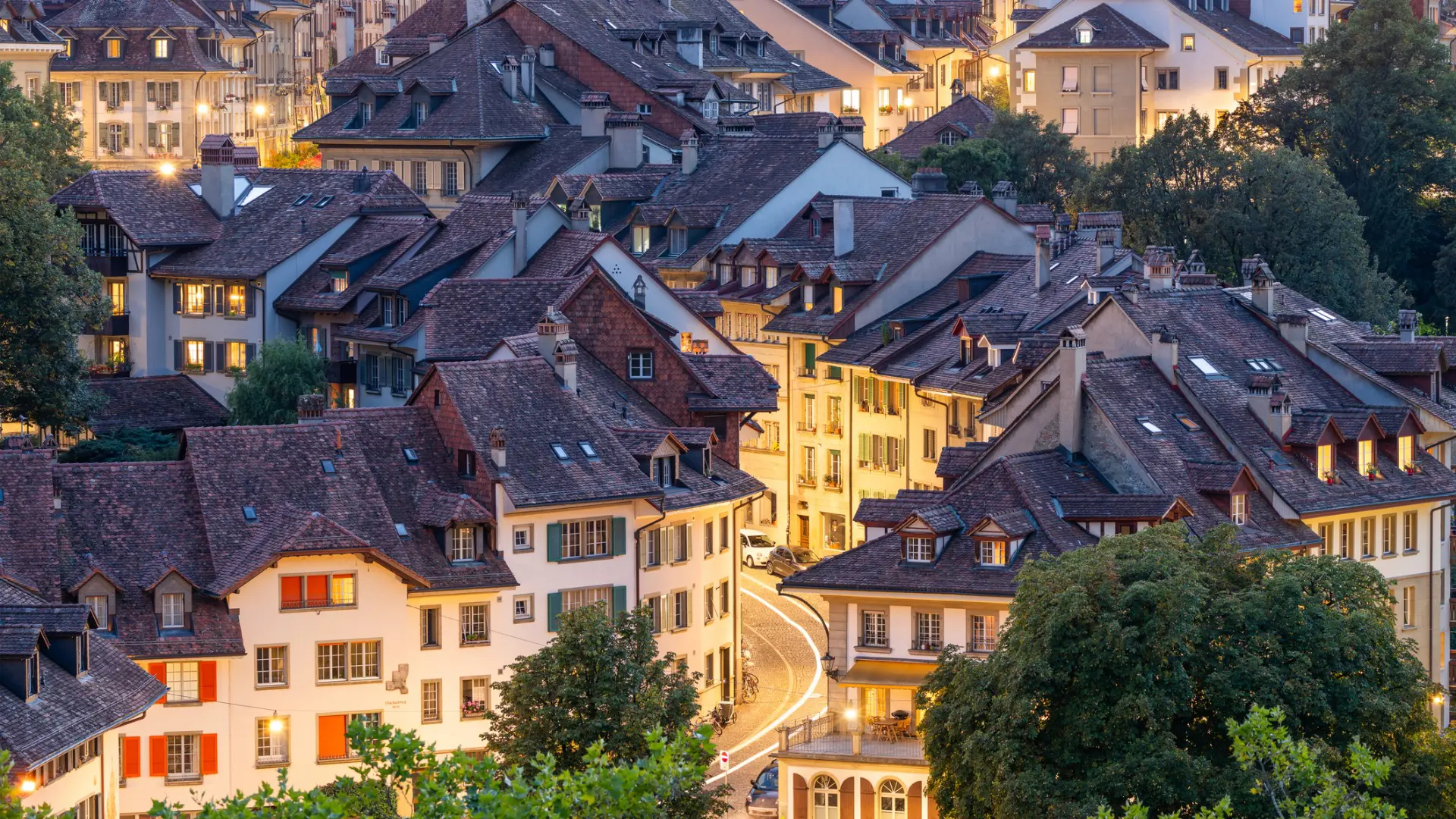
9 Best Places To Visit in Switzerland
These 9 amazing places in Switzerland are natural starting points for an itinerary. Each serves as a hub for experiencing a piece of everything the country has to offer: rich history, culture, gastronomy, retail therapy, and easy access to scenic nature.
All you need to bring for your Switzerland trip is a sense of adventure and extra space in your suitcase for any impromptu shopping sprees.
1. Zürich
Switzerland’s largest city and main financial hub blends modernity with a charming Old Town. The Altstadt is the ideal starting point for a first visit to Zurich, where cobblestone streets give way to the Grossmunster and Fraumunster churches.
This is also where you’ll find the Kunsthaus art gallery and the Swiss National Museum. Zurich’s historic quarter straddles both banks of the Limmat River on its journey to Lake Zurich, where walking trails trace the shoreline. Boat tours operate on the lake, and swimming is permitted during the summer months.
The left bank of the river is known as the Lindenhof and is built over the foundations of a Roman fort. This hilly quarter now comprises a serene park with views over the river and the Altstadt.
Accessible via train and then a short hike, the summit of Uetliberg Mountain grants incredible views over Zurich and the lake. This green oasis offers a variety of hiking and mountain biking trails.
Trains to Schaffhausen connect with the Rhine Falls – the largest waterfall in Europe – with boat rides taking you within touching distance of the spray. The Seerenbach Falls near Lake Walen is an additional excursion near Zurich for waterfall chasers.
As with most of the best places to visit in Switzerland, summer is the optimal time to visit Zurich to get out on the water. Spring and fall see fewer crowds and pleasant conditions for hiking in the surrounding countryside, while winter brings opportunities for picking up souvenirs from the Christmas markets.
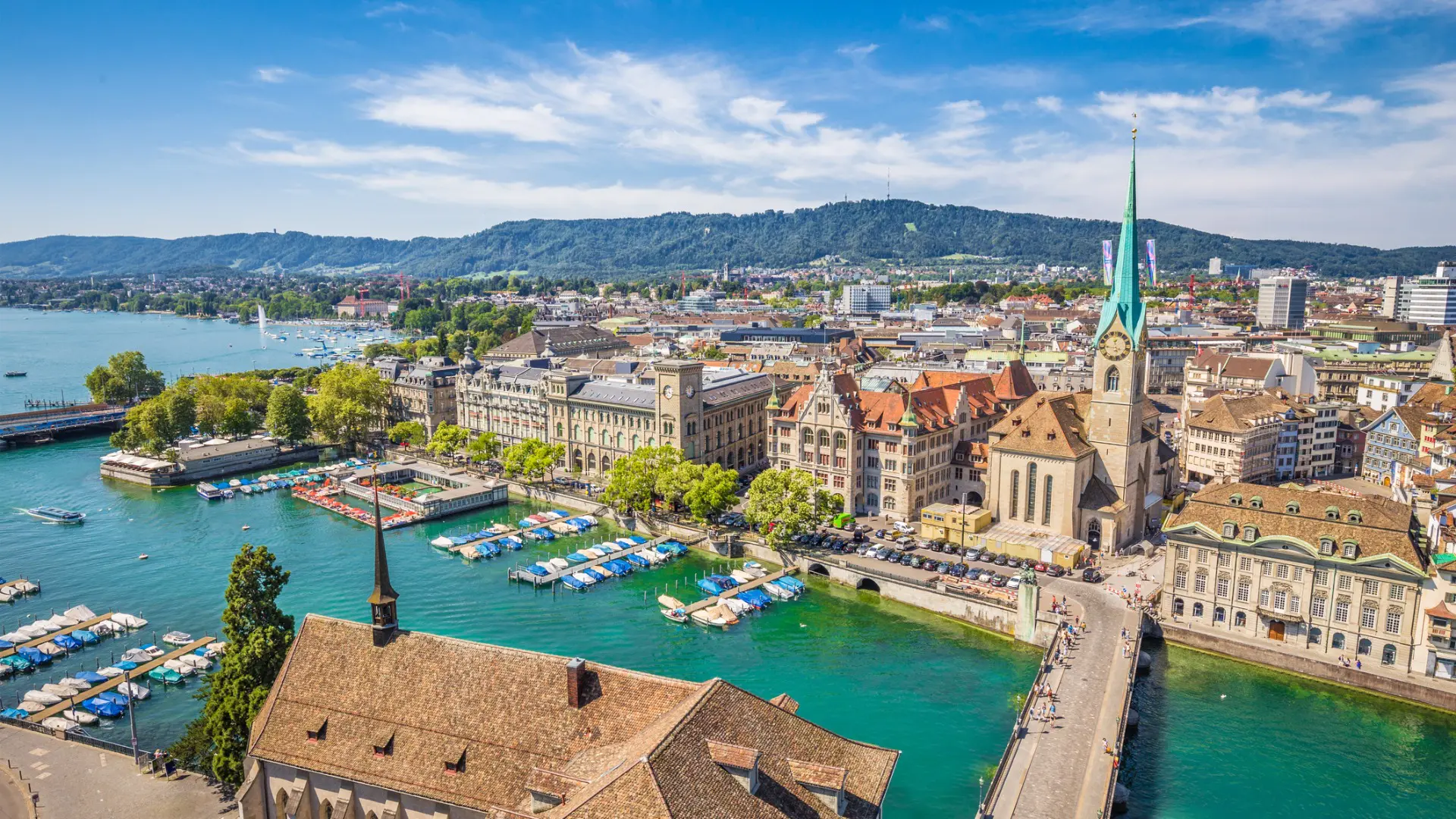
2. Geneva
French-speaking Geneva serves as the headquarters for both the European United Nations and the Red Cross. It was also where the 16th-century Protestant Reformation played out.
This affluent city – known for its watchmaking lineage – sits at the southern end of the shores of Lake Geneva (Lac Léman), and Mont Blanc is visible on clear days.
Visitors to Geneva can meander the picturesque cobblestone streets of Vieille Ville (Old Town) and enjoy panoramic views from the tower of St. Pierre Cathedral. The Reformation Wall honors key figures from the Protestant movement and reflects the city’s role in religious history.
Geneva is one of the best places to visit in Switzerland to learn about global diplomacy. Tours operate at the Palais des Nations, whereas the Red Cross Museum showcases the city’s humanitarian heritage.
At the other end of the scale, you’ll find upscale shopping and high-end dining along the lakeside promenades and green escapes in the Parc des Bastions and the Jardin Anglais.
A boat trip on the crescent-shaped Lake Geneva reveals spine-tingling alpine views, whereas outdoor adventure enthusiasts can enjoy sailing, paddleboarding, or cycling along the waterfront where the Jet d’Eau fountain dances.
As with Zurich, Geneva offers a range of easy day trips. Ride the train to Montreux at the opposite end of Lac Leman and visit the medieval Chillon Castle on the water’s edge.
The UNESCO-designated Lavaux wine region in the Vaud canton stuns with its terraced vineyards and white wines made from Chasselas grapes. The Lavaux Express train negates the need for a designated driver.
For a closer look at Mont Blanc, travel by train to Chamonix in France. Geneva is also the gateway to several ski centers in the French Alps.
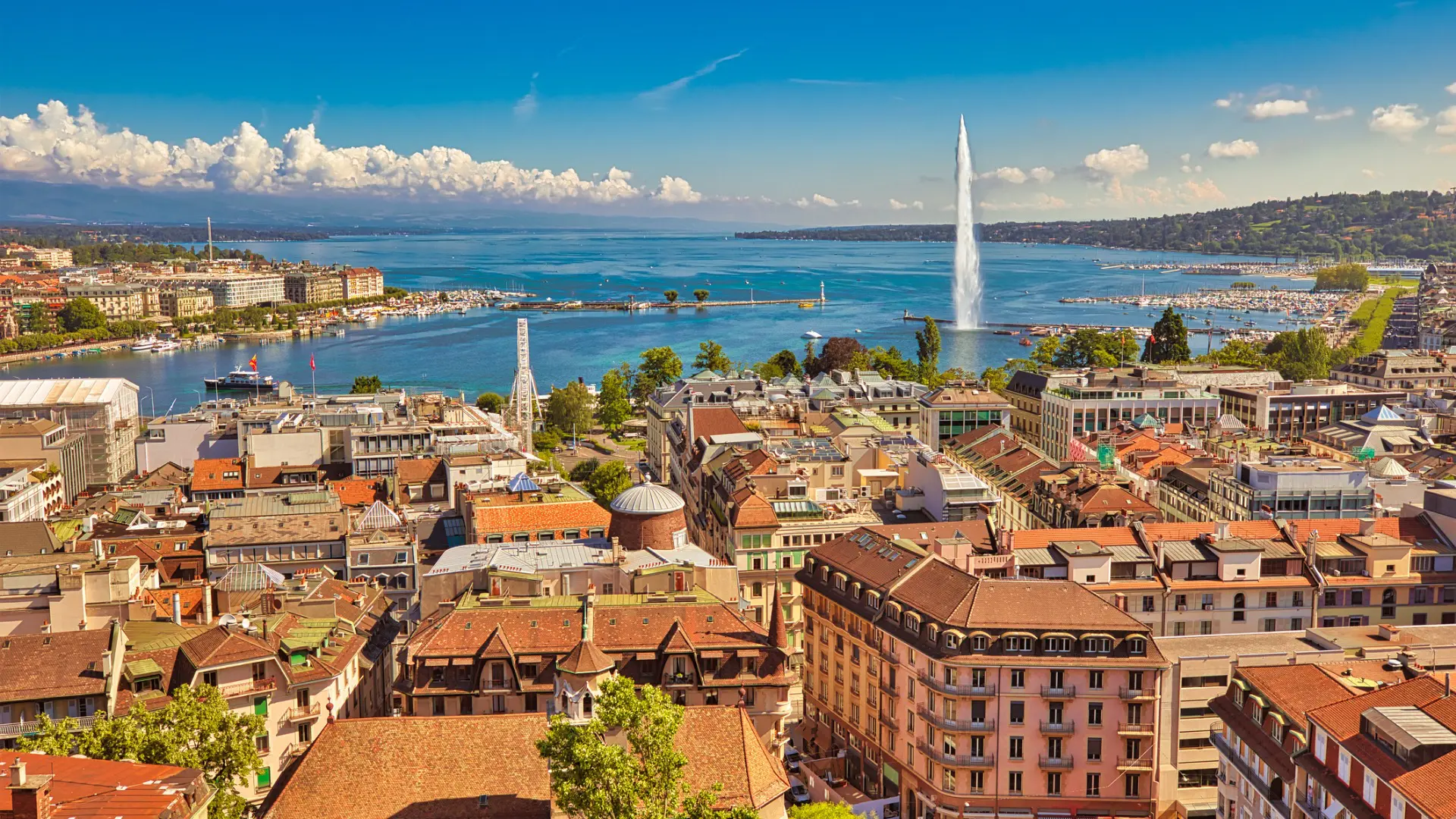
3. Zermatt
Once a humble farming outpost, Zermatt is now a legendary mountain resort in the German-speaking canton of Valais.
Its proximity to the mighty Matterhorn – one of the most popular attractions in Switzerland – attracted climbers during the 19th century and put Zermatt on the map. As interest in mountaineering grew, Zermatt established itself as a destination in Switzerland for adventurers, winter sports enthusiasts, and luxury travelers.
There is an activity for all seasons in Zermatt. In winter, skiers flock to the Matterhorn Glacier Paradise – the highest ski area in the Alps, where a coating of powder lingers even in summer. Zermatt has a delightful apres-ski culture orbiting around cozy chalets and gourmet restaurants.
Nature lovers will find that summer is the best time to visit Zermatt for hiking and biking pursuits in warmer weather.
The Five Lakes Walk (5-Seenweg) is one of the nation’s prized trails, where the Matterhorn dominates the scenery and is reflected to perfection in the water of Stellisee. The moderate, six-mile route also passes the lakes of Grindjisee, Grunsee, Moosjisee, and Leisee.
The Gornergrat Bahn is just one of the spectacular train journeys in Switzerland. This rack railway takes you to a photogenic viewpoint overlooking glaciers and mountains. Meanwhile, the Matterhorn Alpine Crossing cable car links Zermatt with the Italian ski resort of Cervinia for a change of scenery.
Slightly further north, the small town of Brig offers the perfect place to unwind in open-air thermal baths and Europe’s longest water slide.
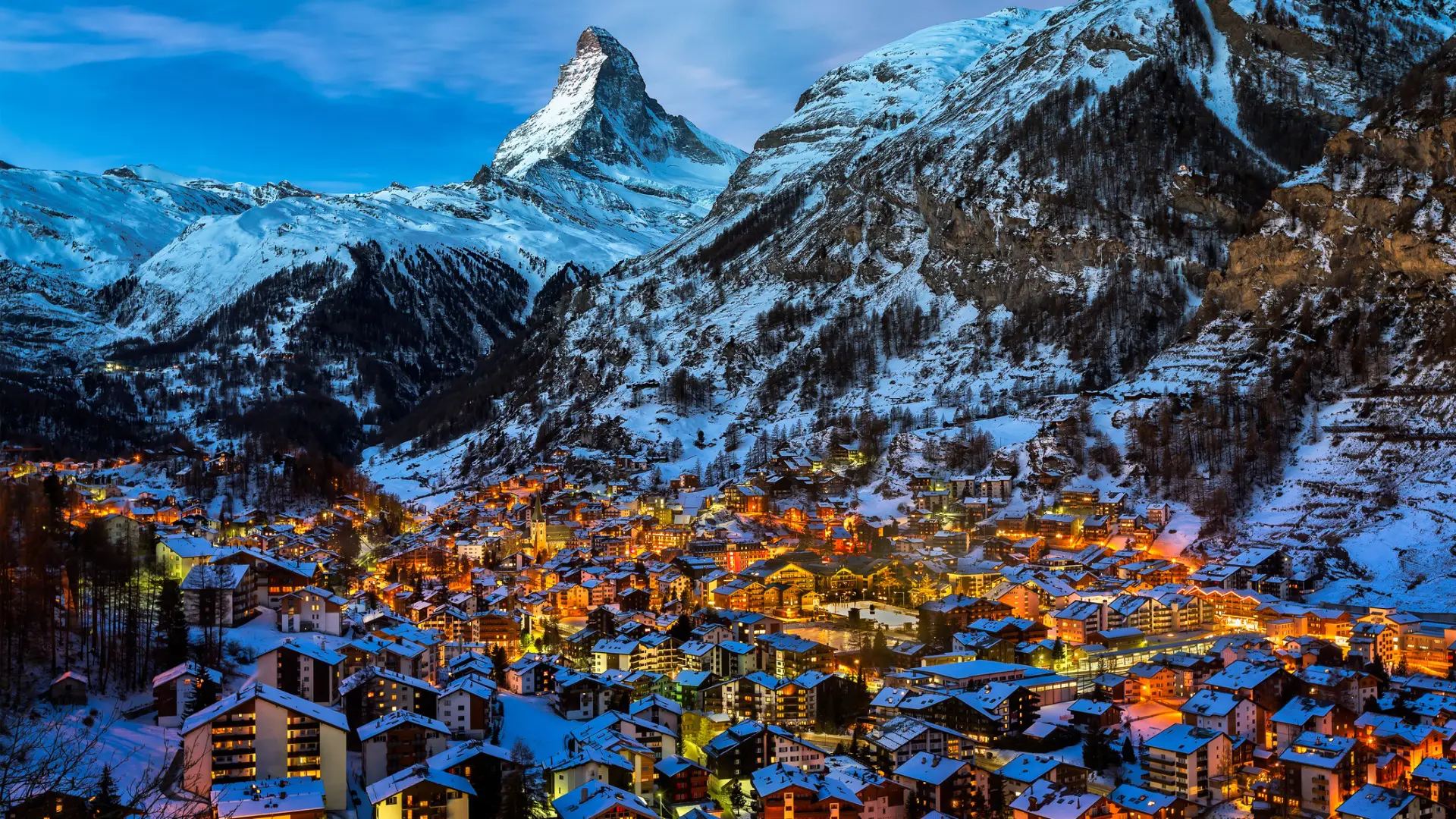
4. Interlaken
Nestled between Lake Thun and Lake Brienz in the heart of the Bernese Oberland, Interlaken, which translates into Between Lakes in English, is one of the best places to visit in Switzerland for an alpine adventure.
This resort town dates back to medieval times when Augustinian monks established a monastery there. The mesmerizing alpine landscapes continued to attract writers and artists, including Goethe and Byron, before becoming a tourism hub.
After the development of the railway system, Interlaken became the main gateway to the mountainous Jungfrau region.
Interlaken offers an abundance of outdoor activities year-round. For the most daring, there is paragliding and skydiving over the lakes or canyoning through rugged gorges. The town is also a nucleus for water sports, with kayaking, paddleboarding, and boat cruises available on both lakes.
The Harder Kulm Hiking Loop ascends to viewpoints over the lakes, whereas the funicular is there for those needing to preserve time and energy.
A scenic train ride to Jungfraujoch, known as the Top of Europe, introduces you to more of Switzerland’s jaw-dropping glacial landscapes.
The summit of the Schilthorn is topped with a revolving restaurant offering 360-degree views of the Swiss Alps. James Bond fans will recognize Piz Gloria from On Her Majesty’s Secret Service.
The dramatic waterfalls – 72 in total – of Lauterbrunnen are a short journey away, while the turquoise waters of Lake Brienz and the charming village of Iseltwald provide tranquil escapes.
In winter, Interlaken is a convenient base for the ski resorts of Grindelwald, Wengen, and Murren.
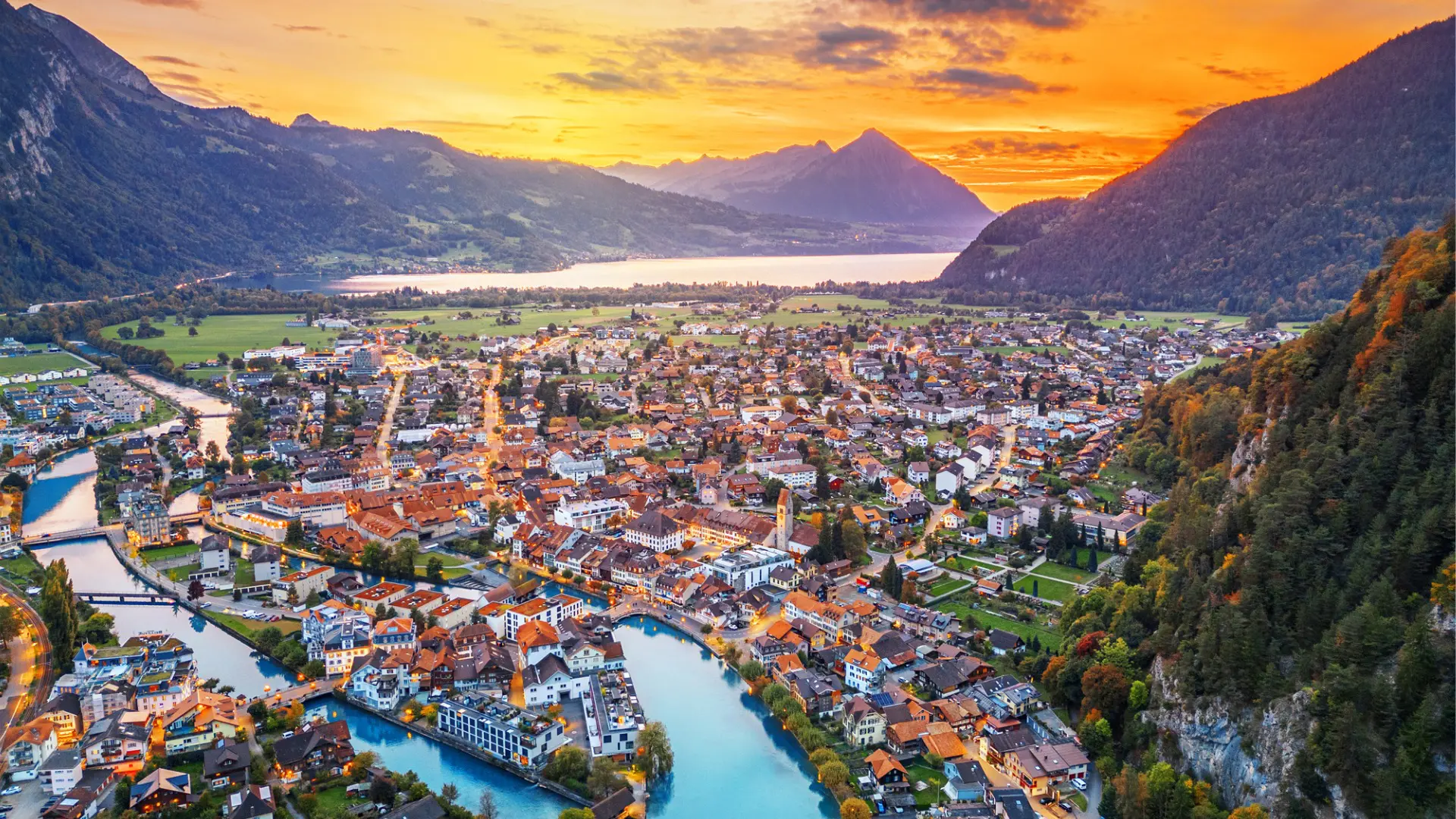
5. Bern
Bern, the administrative capital of Switzerland and seat of the Swiss government was founded by Duke Berthold V of Zahringen in 1191.
Legend says he named the city after a bear he hunted in the area, which remains a symbol of Bern to this day. In fact, you’ll encounter a family of real-life brown bears in the heart of the city.
Bern was founded as a center of trade and commerce ahead of joining the Swiss Confederation in 1353.
The city’s medieval Old Town, a UNESCO World Heritage Site, comprises sandstone buildings and almost four miles of shopping arcades. The Zytglogge astronomical clock, Federal Palace, and Bear Park (home to the aforementioned bears) are key sights to check out.
Art lovers can connect with the work of Paul Klee at his dedicated museum, whereas science buffs can brush up on Albert Einstein’s experiences living in the Swiss capital at the Bern Historical Museum. Those traveling in the summer can take a refreshing dip in the Aare River.
Bern’s relatively central location makes it one of the best places in Switzerland for day trips. Thun is an easy 30-minute train ride away, and a day can be spent touring the castle and sailing across Lake Thun.
A day in the fairytale town of Gruyeres may be divided between touring the cheese factory and delving into history at the medieval castle. The waterfalls and alpine scenery of the Lauterbrunnen Valley are an hour away by rail or road, while Interlaken is less than an hour by train.
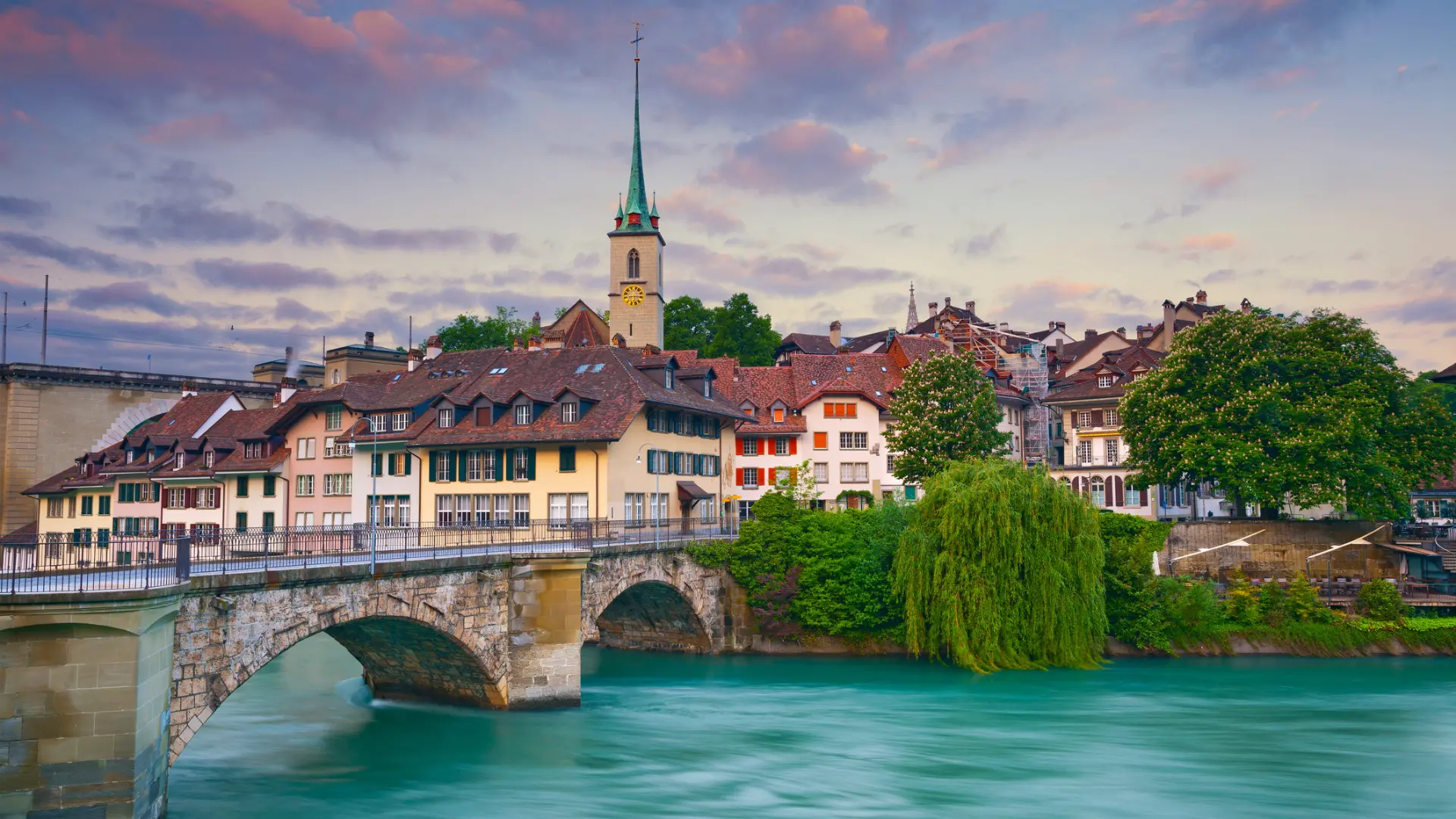
6. Grindelwald
Grindelwald is a picturesque Swiss village in the Bernese Alps. As part of the Oberland region, Grindelwald started out as an agricultural settlement and remains deeply rooted in alpine culture alongside outdoor pursuits.
The 19th century saw a swathe of climbers head to Grindelwald, eager to conquer such peaks as the Eiger and Mittelhorn. As the main gateway to the Jungfrau region, Grindelwald also provides opportunities for hiking, mountain biking, paragliding, and skiing.
There are slopes for all abilities at the two valleys that make up the Jungfrau Ski Region. The Eiger Express cable car, operating all year, connects Grindelwald with the Eiger Glacier.
One of the best things to do in Grindelwald is to hike to Lake Bachalp (Bachalpsee). This expedition starts with riding the cable car to First Station, from where it’s an easy one-hour walk to the lake where the often snow-capped mountains are reflected flawlessly on the water’s surface.
The hike may be bookended with a lap of the First Cliff Walk. This metal walkway is suspended on the edge of the mountain and supplies breathtaking views of the valley.

7. Lucerne
Lucerne is a handsome city in the very heart of Switzerland, which developed from an 8th-century fishing and farming settlement. The construction of the St. Gotthard Pass in the 13th century put Lucerne on the map for trade routes linking northern and southern Europe.
Lucerne was also one of the founding members of the Swiss Confederation, marking the beginning of its growth as a political and economic center. In the centuries that followed, Lucerne flourished as a cultural and artistic hub, attracting painters, writers, and musicians.
Today, travelers can explore a fantastically preserved Altstadt awash with frescoed buildings, Lake Lucerne, which is often considered the most beautiful lake in Switzerland, and one of the oldest covered wooden bridges in Europe.
Chapel Bridge depicts scenes illustrating pivotal moments from Swiss history. The Swiss Museum of Transport and the Rosengart Collection provide a dose of culture on a rainy day in Lucerne.
As is a theme in the best places to visit in Switzerland, the waterfront district supplies mountain views and scenic cruises, including transfers to the historic village of Weggis.
Nearby, the world’s steepest cogwheel railway carries travelers up to the top of Mount Pilatus for a bird’s eye perspective. The sunrise package makes for a unique experience in Lucerne and is worth the early start.
A short train ride links Lucerne with Engelberg, where the glacial landscape of Mount Titlis may be appreciated year-round from the Cliff Walk. There are ample opportunities for hiking in the unblemished Swiss countryside from Lucerne.
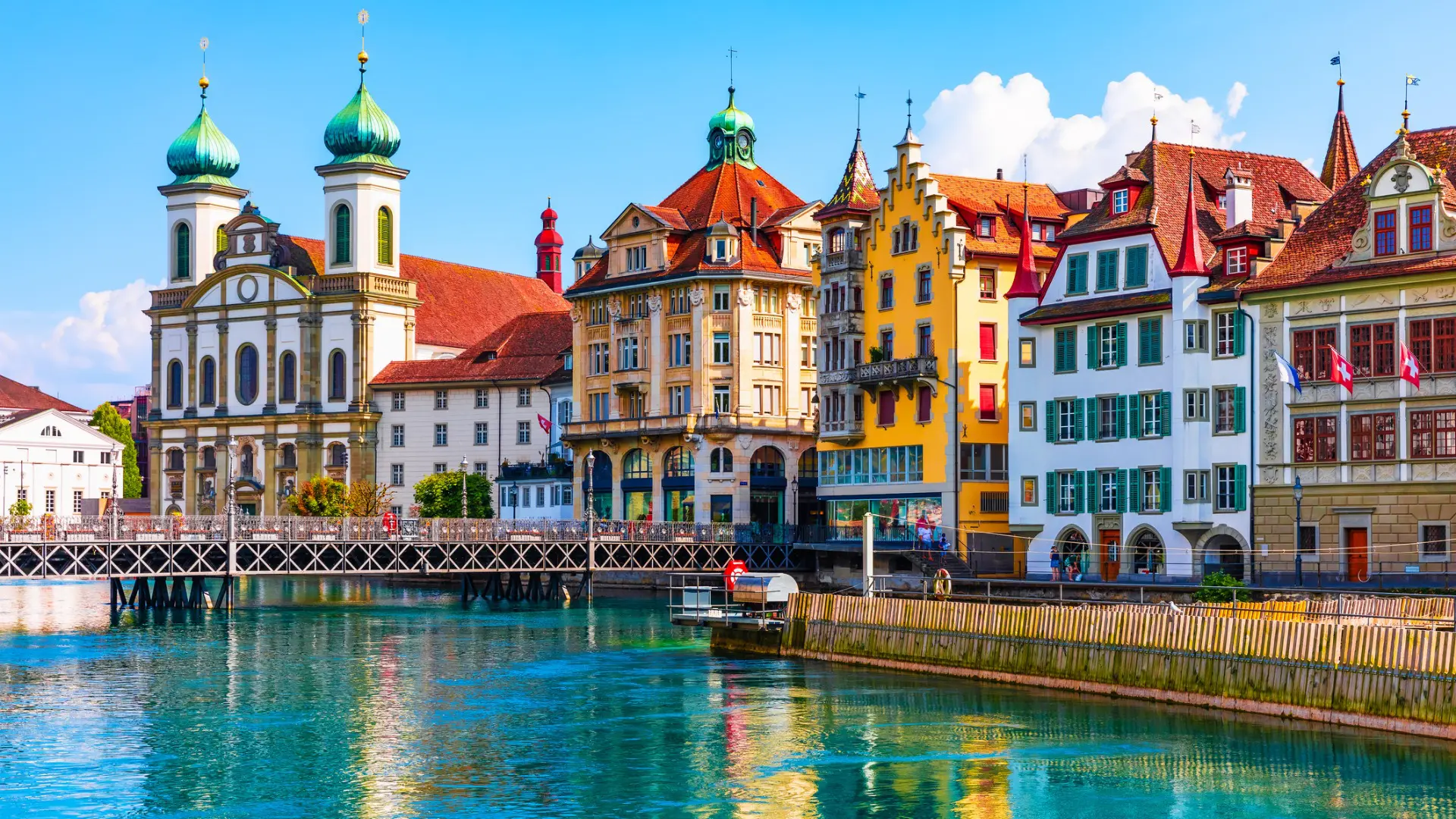
8. St. Moritz
St. Moritz is one of the most historic destinations in Switzerland – but we’re not referring to museums and relics. This alpine resort in the southeast of the country garnered attention for its mineral springs as far back as the Bronze Age and became a place of pilgrimage.
During the 19th and 20th centuries, St. Moritz shifted into a glamorous and luxurious destination for winter leisure tourism.
The town hosted the Winter Olympics twice – in 1928 and 1948 – and continues to usher in a conveyor belt of celebrities and sports enthusiasts turning up to ski and snowboard perfectly groomed slopes and attend off-piste events.
St. Moritz also caters to cross-country skiers and offers bobsledding on the world’s only natural ice track. Lake St. Moritz freezes over in winter and provides a stage for such unique sports as cricket and polo on ice.
As the snow thaws and the ice melts, the Engadin Valley is transformed into a center for hiking, mountain biking, sailing, windsurfing, and stand-up paddleboarding.
A short ride on the Muottas Muragl presents panoramic views of the Alps. Back in town, Via Serlas teems with luxury shopping boutiques, Michelin-starred restaurants, and rejuvenating spa resorts.
In terms of day trips from St. Moritz, the tranquil village of Sils Maria is home to the Nietzsche House Museum, where the German philosopher spent his summers. The Swiss National Park – the only one of its kind in the entire country – is another alternative for wildlife enthusiasts.
Connecting St. Moritz with Zermatt and weaving through the Swiss mountains, the Glacier Express is considered one of the most scenic train rides in the world.
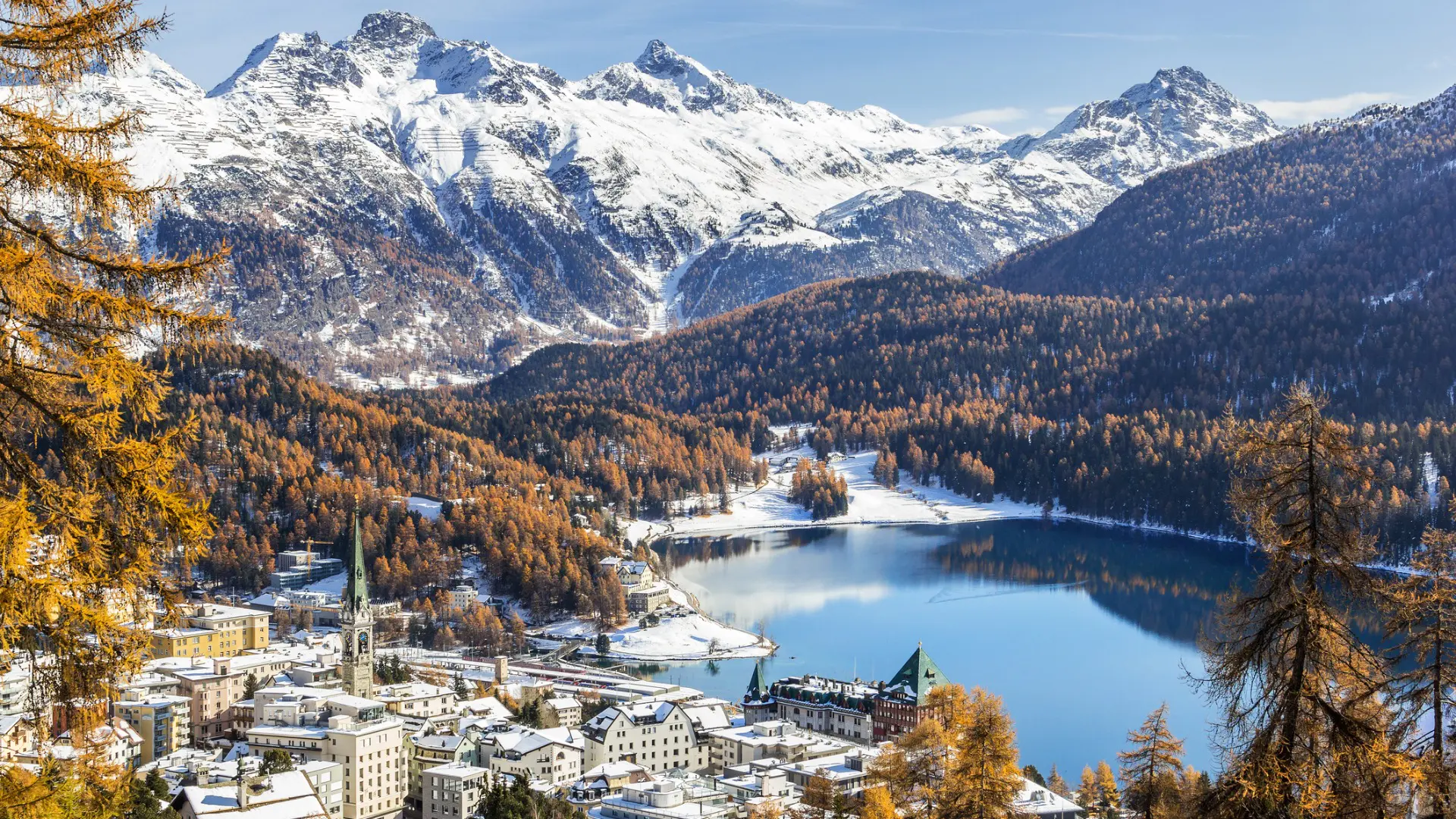
9. Lugano
Lugano is the largest city in Switzerland’s Italian-speaking Ticino region. Given its proximity to the border, the city carries influences from Swiss and Italian cultures.
The area surrounding Lugano was originally inhabited by Celts before falling under the Roman Empire as a trade center.
Lugano was tussled between the Dukes of Milan and Swiss forces before officially becoming part of the Swiss Confederation in 1513. Over the centuries, Lugano has flourished as a cultural and financial center.
The promenade of Lake Lugano steals the show due to its views of the water and the Alps. These views are only exceeded by those found at the summits of Monte Brè and Monte San Salvatore, both of which are accessible via funicular or hiking trails from town.
Yet more photogenic sites await in the historic city center, which is divided into elegant piazzas and arcaded streets with postcard-pretty pastel buildings. The Church of Santa Maria degli Angioli is famous for the Renaissance frescoes preserved in the nave.
The shopping and dining scenes in Lugano reflect the city’s Italian influence, with traditional grottos serving Ticinese specialties. Overindulgence may be walked off in Lugano’s largest park, Parco Ciani. This is a peaceful retreat where paths cross through manicured gardens skirting the waterfront.
A short boat ride south across the lake leads to the village of Morcote, noted for its colorful waterside quarter and Italianate botanical gardens.
Further north and accessible by train, Bellinzona is worth a visit for its three medieval castles: Castelgrande, Montebello, and Sasso Corbaro. These UNESCO World Heritage Sites delve into Swiss history and exhibit an impressive collection of archeological artifacts.
For travelers continuing onwards to Italy, trains between Lugano and Milan take one hour.
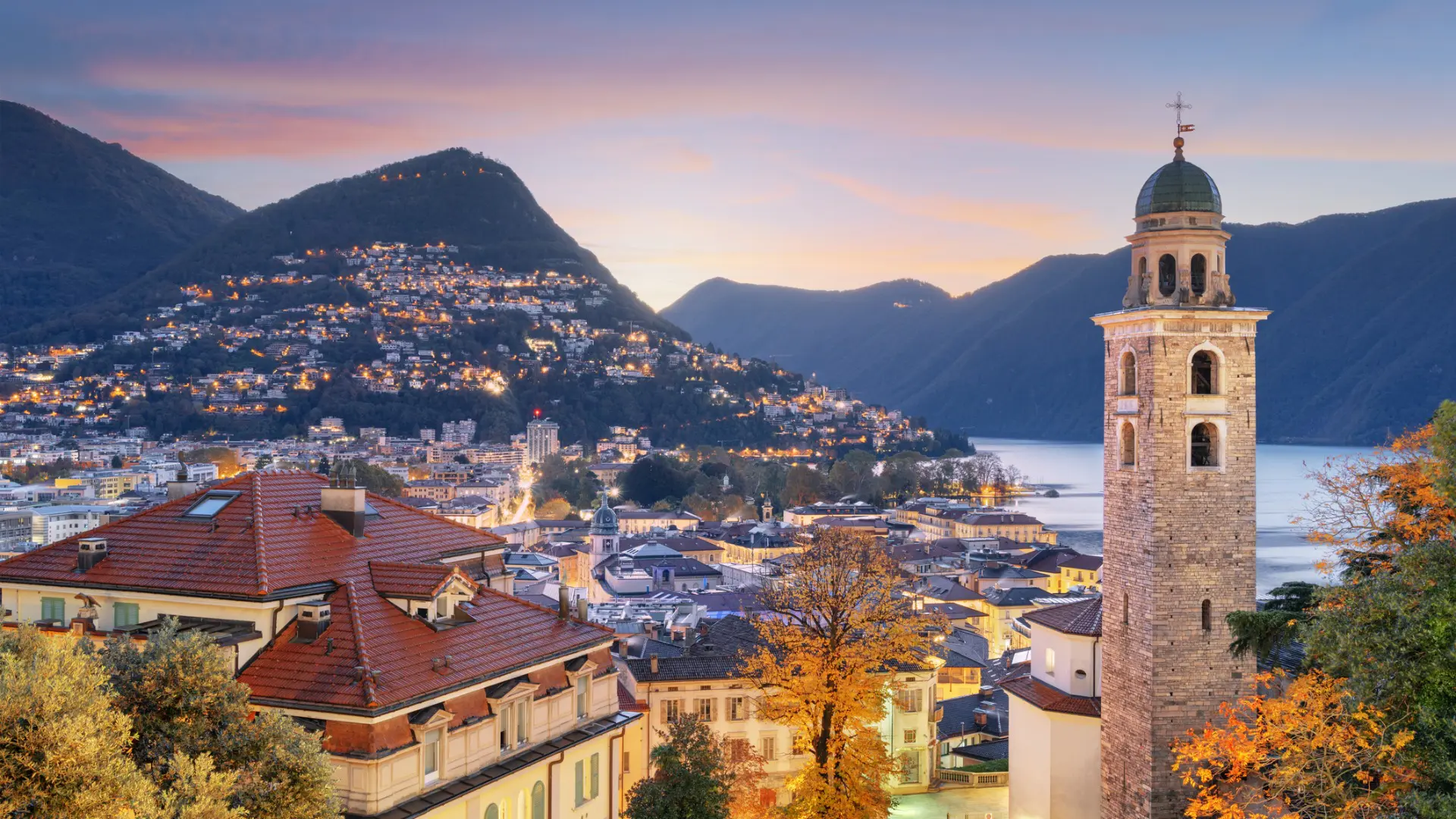
See The Best Places in Switzerland With JayWay
Switzerland is a land of wonders, and even more so if you see it through the eyes of our expert trip planners and passionate local staff on the ground. At JayWay Travel, we know Switzerland quite well, and we’ll be more than happy to craft the perfect Switzerland itinerary for you.
So, if you’re dreaming of your next trip, the best places to visit in Switzerland are only an email or phone call away.

Born and raised in Athens, Maria’s passionate about travel and storytelling, a combination that makes her ideal for her role as our content manager.